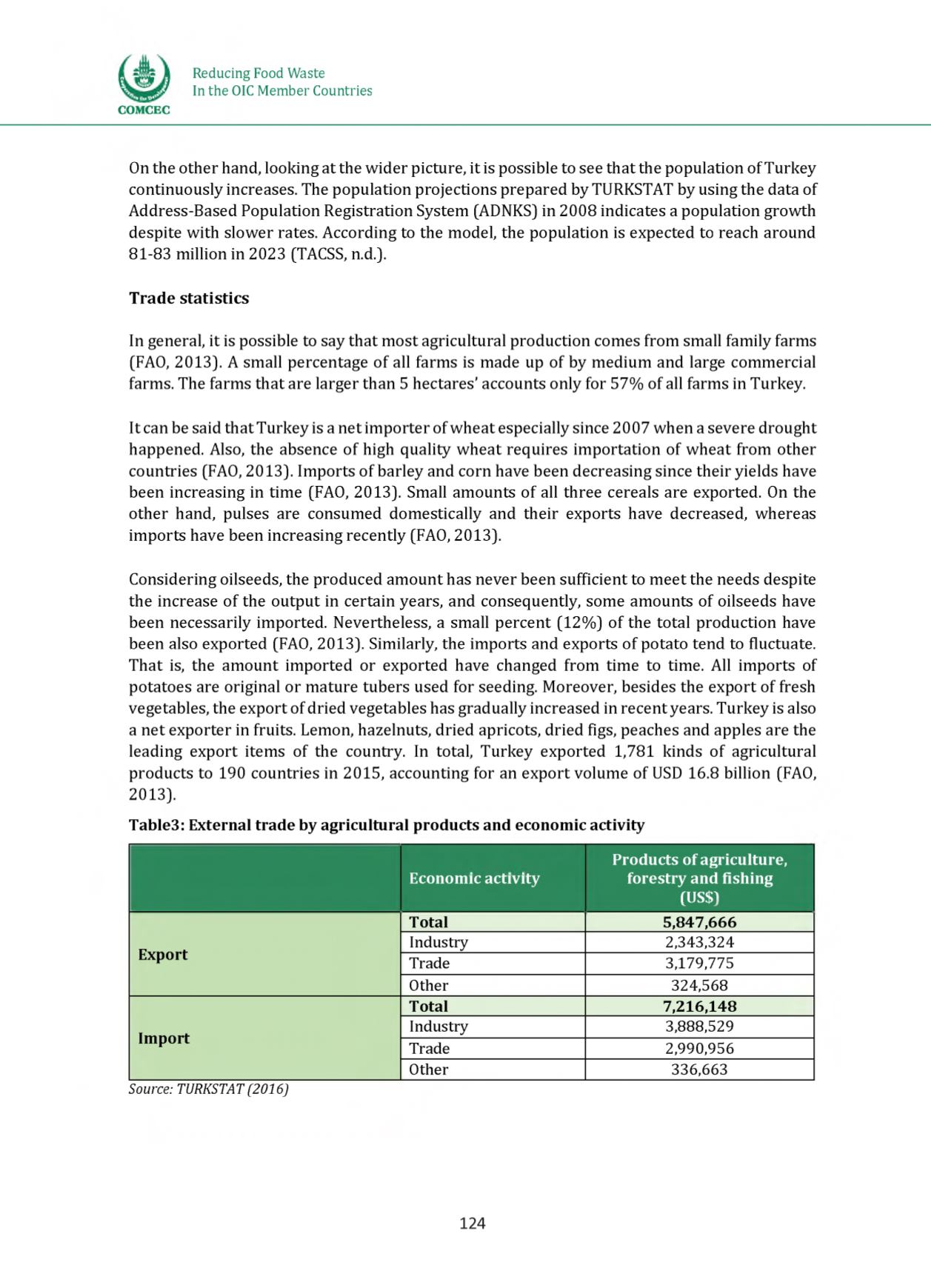

Reducing Food Waste
In the OIC Member Countries
COMCEC
On the other hand, looking at the wider picture, it is possible to see that the population of Turkey
continuously increases. The population projections prepared by TURKSTAT by using the data of
Address-Based Population Registration System (ADNKS) in 2008 indicates a population growth
despite with slower rates. According to the model, the population is expected to reach around
81-83 million in 2023 (TACSS, n.d.).
Trade statistics
In general, it is possible to say that most agricultural production comes from small family farms
(FAO, 2013). A small percentage of all farms is made up of by medium and large commercial
farms. The farms that are larger than 5 hectares’ accounts only for 57% of all farms in Turkey.
It can be said that Turkey is a net importer of wheat especially since 2007 when a severe drought
happened. Also, the absence of high quality wheat requires importation of wheat from other
countries (FAO, 2013). Imports of barley and corn have been decreasing since their yields have
been increasing in time (FAO, 2013). Small amounts of all three cereals are exported. On the
other hand, pulses are consumed domestically and their exports have decreased, whereas
imports have been increasing recently (FAO, 2013).
Considering oilseeds, the produced amount has never been sufficient to meet the needs despite
the increase of the output in certain years, and consequently, some amounts of oilseeds have
been necessarily imported. Nevertheless, a small percent (12%) of the total production have
been also exported (FAO, 2013). Similarly, the imports and exports of potato tend to fluctuate.
That is, the amount imported or exported have changed from time to time. All imports of
potatoes are original or mature tubers used for seeding. Moreover, besides the export of fresh
vegetables, the export of dried vegetables has gradually increased in recent years. Turkey is also
a net exporter in fruits. Lemon, hazelnuts, dried apricots, dried figs, peaches and apples are the
leading export items of the country. In total, Turkey exported 1,781 kinds of agricultural
products to 190 countries in 2015, accounting for an export volume of USD 16.8 billion (FAO,
2013).
Table3: External trade by agricultural products and economic activity
Economic activity
Products of agriculture,
forestry and fishing
(US$)
Export
Total
5,847,666
Industry
2,343,324
Trade
3,179,775
Other
324,568
Import
Total
7,216,148
Industry
3,888,529
Trade
2,990,956
Other
336,663
Source: TURKSTAT(2016)
124
















